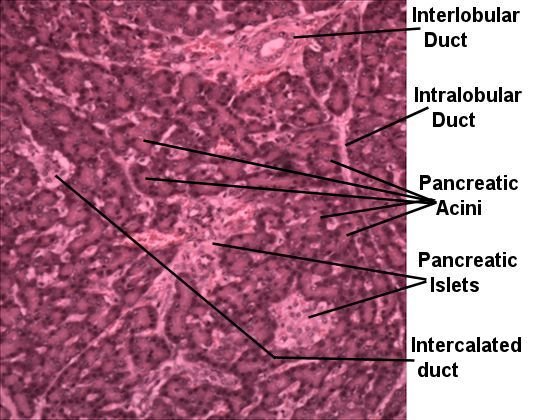

This page has endocrine histology of the pancreas under high power.The pancreas is a mixed gland meaning it has both endocrine and exocrine tissue. When look at the pancreas under the microscope you will see numerous pancreatic acini cells that produce pancreatic juice which aids in digestion. Interspaced among the acini cells are clumps that look like islands. These clumps are the pancreatic islet cells (a.k.a. Islets of Langerhans) and they produce the endocrine hormones of the pancreas. Alpha cells produce the hormone glucagon which is released in response to low blood sugar. As a result of glucagon secretion, the liver releases its glycogen stores, in the form of glucose, and produces new glucose from select amino acids. Insulin is released as a result of high blood sugar and is produced in by the beta cells. Insulin causes glucose and amino acids to be taken up by muscle and adipose tissue and it also causes an increase in anabolic reactions within cells. Slides which were taken by bio 139 students from spring of 2018 to fall of 2019 are in the right hand side and your lab book's picture is on the left hand side. Compare those pictures to the lab book pictures by scrolling trough the student pictures using the yellow arrows. Then draw the histology as instructed by your teacher.
| Lab Book Image | Student Images |
|---|---|
 
|
Pancreas Low Power |